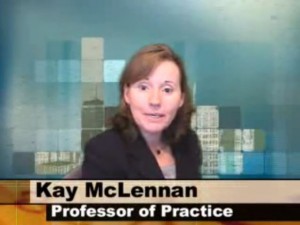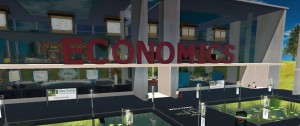Course Description
Economics for Nonmajors [CSEC-1000-10 (Online) — [A completely online course.] Students enrolled in this course will study the basic theories and techniques of both microeconomics and macroeconomics. Microeconomics is the study of individual actors in the economy, including households, business firms, and governments. Macroeconomics is concerned with the behavior of the entire economy, including total output, total employment, and the overall price level.
 Watch the video entitled, “Why Study Economics?”@ https://www.youtube.com/watch?v=fRirKgHQ9rQ
Watch the video entitled, “Why Study Economics?”@ https://www.youtube.com/watch?v=fRirKgHQ9rQ
[Optional] Virtual World Learning Activities

What am I supposed to do now that I have logged into the Tulane SCS Metaverse?
(1) Explore the different economics-related learning activities (by logging into the virtual world twice during the module two discussion period).
(2) While most of the learning activities can be completed individually (and asynchronously), if you are interested in participating in a real time activity with other members of the class and/or the course instructor (like the Free Trade Game), sign-up for one of activity times listed on the Virtual World Forum on the “Main” course site discussion board.
(3) Take the “Participant Survey” (during module three) and provide important feedback to your course instructor.
What economics-related learning activities are included on the Tulane SCS Campus island?
(1) The “Monopoly Challenge” quiz game is located on the first floor of the Economics building.
(2) Economics slide show resources are located on the first floor of the Economics building.
(3) “The Free Trade Game” is located on the first floor of the Economics building.
(4) The “are the best things in life free?” voting icon is on the first floor of the Economics building.
(4) “Meet the Economist” display is available on the second floor of the Finance building.
(5) A “Wizard of Oz” monetary policy allegory diorama is located on the second floor of the Economics building;
(6) Game theory displays plus actual games are available on the second floor of the Economics building.
(7) [Economics] Problem solver white boards (with built-in self-test answer rezzers) are on the third floor of the Economics building; and
(8) [Avatar-sized] Supply and demand graphs (depicting a change in demand) are on the the third floor of the Economics building;
What course learning outcomes do the above virtual world learning activities support?
The virtual world learning activities on the Tulane SCS Campus should contribute to your understanding of:
(1) How a demand/supply schedule and a demand/supply curve are used to demonstrate the law of demand/supply as well as determine how equilibrium price and quantity are determined in a competitive market;
(2) The concept of opportunity cost and how to measure this cost in terms of explicit and implicit costs;
(3) How to calculate elasticities;
(4) [Through problem-solving] The concepts of marginal product, diminishing returns, and the different types of costs — implicit versus implicit and fixed versus variable costs;
(5) The economic gains possible from trade;
(6) How economic growth (and/or inflation) is influenced by the money supply — through the “Wizard of Oz” allegory;
(7) The characteristics of a monopoly market structure; and
(8) Why economic growth is an important determinant of a nation’s standard of living.